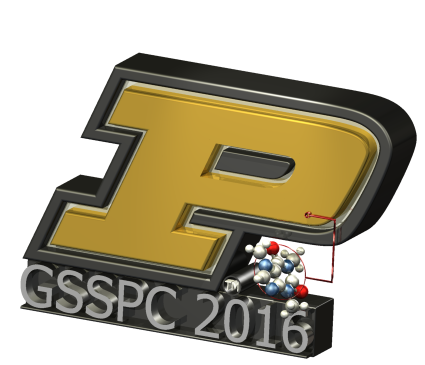Speakers

Professor Roger Y. Tsien: Professor of Pharmacology and Chemistry/Biochemistry at the University of California, San Diego, and Investigator of the Howard Hughes Medical Institute. Professor Tsien is best known for his development of fluorescent proteins to monitor gene expression and protein fates in cells and organisms. In 2008, Professor Tsien shared the Nobel Prize in chemistry for discovery and development of GFP (green fluorescent protein) with two other scientists, Professor Martin Chalfie and Professor Osamu Shimomura. His most recent work has two main foci: peptides to help treat cancer and the molecular basis of long-term memory.

Professor Richard Caprioli; the Stanford Moore Professor of Biochemistry and Director of Mass Spectrometry at Vanderbilt University School of Medicine. Professor Caprioli's work involves the utilization of Matrix Assisted Laser Desorption Ionization (MALDI) mass spectrometry to produce images of biological tissues. His work involves many problems regarding the spacial distribution of molecular species in biological tissues and some of his group's latest research includes the fusion of microscopy and MALDI for multimodal molecular mapping of biological tissues.

Dr. Martin Schnermann; an investigator in the Center for Cancer Research (National Cancer Institute). Dr. Schnermann's research centers on the development of small molecule-based techniques that take advantage of the low toxicity and high tissue penetration of light in the near-IR range. A major focus is to discover and apply near-IR uncaging approaches with applications in tracking and controlling cell fate and for drug delivery.

Professor Paul R. Selvin; a professor in the Department of Physics and Biophysics at the University of Illinois at Urbana-Champaign. He is known for his work with molecular motors and for developing the super-resolution technique FIONA—Fluorescence Imaging with One-Nanometer Accuracy. His group is currently working on ultra-structure determination of neuronal synapses using super-resolution microscopy.
Professor Christine Payne; an associate professor at Georgia Tech. Her research is aimed at understanding the molecular mechanisms by which cells and synthetic materials interact. These investigations include interactions between cells and nanoparticles and condictive polymers. The Payne group uses techniques that can provide nanometer scale images to tackle these problems.
Professor Zhen Cheng; an Associate Professor of Radiology and a member of the Molecular Imaging Program at Stanford (MIPS), BioX program, Canary Center at Stanford for Cancer Early Detection and Stanford Cancer Center. He currently leads the Cancer Molecular Imaging Chemistry Laboratory of the MIPS where he is developing novel molecular probes especially PET and SPECT probes, non-invasive imaging techniques and bionanotechnology for the multimodality early detection of cancer. Dr. Cheng has published over 160 peer reviewed articles, 8 book chapters, and he is a co-inventor of 14 patents. He has served as a reviewer for numerous funding agencies including NIH, DOD, DOE. He has also served as an active reviewer for over 100 research journals, abstract reviewer and session chair for numerous meetings (SNM, WMIC, SRS, etc.).
Professor R. Graham Cooks; Henry B. Hass Distinguished Professor of Analytical Chemistry, recently elected to the National Academy of Sciences. Professor Cooks' research covers many aspects of Mass Spectrometry from the fundamental aspects of ion chemistry to the clinical aspects of molecular imaging. Desorption Electrospray Ionization (DESI) was developed in his lab, is growing in its utility in the diagnostic and clinical chemistry fields and it has proven to be a fantastic, ambient ionization method for the imaging of biological tissues without the need for sample pre-treatment.
Professor Ji-Xin Cheng; Professor in both the Weldon School of Engineering and the Department of Chemistry at Purdue University. Professor Chengs work pushes the limits of vibrational spectroscopy for imaging molecules in vivo, from vast reductions in the time required to collect such images to combinations of acoustic and spectroscopic techniques for deep tissue imaging.

About us:
The Purdue GSSPC is tasked with delivering a symposium at the 251st ACS National Meeting in March 2016 on the subject of molecular imaging. We hope to deliver a symposium covering many modern research topics encompassed by this broad field.
If you have any questions related to the symposium, please don't hesitate to contact any one of the co-charis listed below.
Co-Chairs
Anthony Tomaine
atomaine@purdue.edu
Kristen Gettys
kgettys@purdue.edu
Susannah Cox
cox55@purdue.edu
Heather Schoonover
hschoono@purdue.edu
Carly Schnoebelen
cschnoeb@purdue.edu
Stephen Ayrton
sayrton@purdue.edu